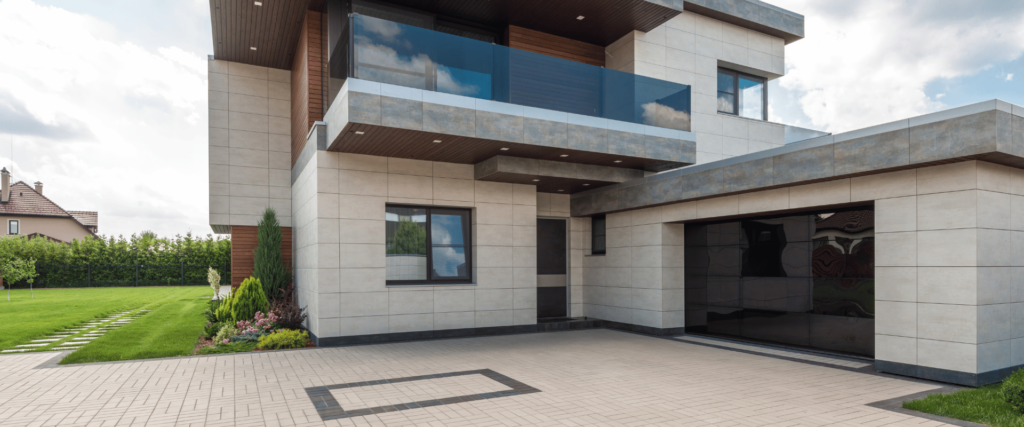Your garage door is likely one of the most frequently used entrances to your home, providing convenience and security. However, it’s also one of the heaviest and most mechanically complex components of your home. Without proper care and attention, garage doors can pose major safety risks. This post will guide you through essential garage door safety tips every homeowner should know to keep your family and property safe.

Regular Inspections: The First Line of Defense
Regular inspections are crucial for maintaining garage door safety. Many issues can go unnoticed until they cause significant problems, so it’s important to routinely check your garage door’s components.
Visual Inspection: Start by visually inspecting the door’s components, including the springs, cables, rollers, and pulleys. Look for signs of wear and tear, rust, or any broken parts. If you notice anything out of the ordinary, it’s best to call a professional to assess the situation.
Balance Test: A well-balanced garage door is essential for safe operation. To test the balance, disconnect the automatic opener and manually lift the door. It should lift smoothly and stay open about three to four feet off the ground. If it doesn’t, the door may be out of balance, which can strain the opener and lead to more severe issues down the road.
Test the Auto-Reverse Feature: Modern garage doors are equipped with an auto-reverse feature that prevents the door from closing if an object is detected in its path. To test this feature, place a small object, such as a roll of paper towels, in the door’s path and try to close it. The door should reverse immediately upon contact. If it doesn’t, the sensors may need adjusting or replacing.
The Importance of Photoelectric Sensors
Photoelectric sensors, also known as safety eyes, are an essential component of garage door safety. These sensors are located near the bottom of the garage door tracks and emit an invisible beam across the door’s path. If anything interrupts the beam while the door is closing, the door will automatically stop and reverse.
Before we continue to read more about garage doors you can do that by clicking here
Keep Sensors Clean and Aligned: Dust, dirt, and debris can interfere with the sensors’ operation. Regularly clean the sensors with a soft cloth and ensure they are aligned correctly. The sensors should face each other directly, with no obstruction.
Test the Sensors Monthly: As with the auto-reverse feature, you should test the sensors at least once a month. Simply close the garage door and wave an object in front of the sensors. If the door doesn’t reverse, it’s time to inspect the sensors and possibly call a professional for help.
DIY vs. Professional Maintenance
While some garage door maintenance tasks can be safely handled by homeowners, others are best left to professionals. Here’s a breakdown of what you can do yourself and when you should call in an expert:
DIY Tasks:
Lubrication: Regularly lubricate the moving parts of your garage door, including the rollers, hinges, and springs. Use a silicone-based lubricant for smooth operation and to reduce wear and tear.
Tightening Hardware: Garage doors go through a lot of movement, which can cause hardware to loosen over time. Periodically check and tighten any loose bolts and brackets.
Cleaning the Tracks: Keep the tracks free of debris and dirt. You can use a damp cloth to wipe them down and ensure smooth operation.
Professional Tasks:
Spring and Cable Repairs: The springs and cables on your garage door are under extreme tension and can cause serious injury if mishandled. Always hire a professional to repair or replace these components.
Sensor and Opener Adjustments: If your sensors or opener aren’t working correctly, it’s best to leave the adjustments to a professional to ensure everything is functioning safely.
Child Safety Tips
Children are naturally curious, and garage doors can be both fascinating and dangerous. Here are some tips to keep your little ones safe:
Keep Remotes Out of Reach: Store garage door remotes out of the reach of children. Consider using a wall-mounted opener that is high enough to prevent accidental operation.
Educate Children on Garage Door Safety: Teach your children that the garage door is not a toy. Explain the dangers of playing near the garage door and demonstrate how the door operates.
Never Walk Under a Moving Door: Make it a rule in your household that no one should walk or run under a moving garage door. Always wait until the door is fully open or closed before crossing its path.
Install a Control Lock: Some garage door openers come with a control lock feature that disables the remote controls, making it impossible for children to operate the door when you’re not around.
When to Call a Professional
While regular DIY maintenance can go a long way in keeping your garage door safe, certain situations call for professional intervention:
Strange Noises: If you hear grinding, squealing, or other unusual noises when operating your garage door, it could indicate a mechanical issue that needs professional attention.
Uneven Movement: If your garage door moves unevenly or appears to be off track, it’s time to call a professional. These issues can worsen over time and lead to more significant damage.
Malfunctioning Sensors: If you’ve tested the sensors and they aren’t functioning correctly, it’s best to have a professional inspect and repair them to ensure your safety.
Broken Springs or Cables: Never attempt to repair or replace garage door springs or cables on your own. These components are under high tension and can cause severe injury if mishandled.
Conclusion
Garage door safety is an essential aspect of home maintenance that every homeowner should prioritize. By following these tips and performing regular inspections, you can ensure that your garage door operates safely and efficiently. Remember, while some tasks can be done on your own, others require the expertise of a professional to keep your family and property safe.